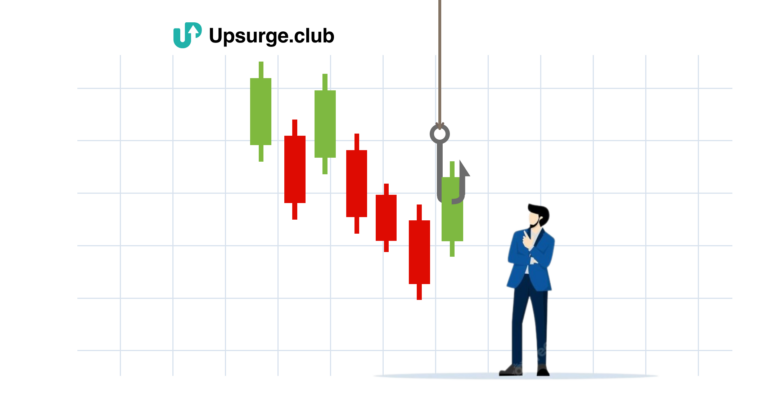Trading in the stock market can be rewarding, but it can also be risky if not approached with a well-defined strategy. Technical analysis is one of the most popular trading strategies employed by many traders and thus, it’s important to understand how to develop a trading strategy using technical analysis.
In this article, we will discuss the importance of developing a trading strategy using technical analysis and provide steps for creating your strategy.
Why Develop a Trading Strategy Using Technical Analysis?
Whether you are an intraday trader, swing trader, or position trader, you must have the ability to take data-driven and fast decisions to make profits. This is why it is crucial to have a reliable strategy in place that helps you make timely and informed decisions. For example, an intraday strategy can outline exactly what, how, and how much you will trade during the day.
Technical analysis can be a valuable tool for developing such a strategy as it allows traders to identify patterns in past market data and make predictions about future market movements using technical indicators, charts, and patterns. If you find it challenging, you can also enroll in a technical analysis course that can provide you with a deeper understanding of the underlying concepts.
How to Develop a Trading Strategy Using Technical Analysis?
The best intraday strategy or swing strategy is thorough and personalized. To develop a trading strategy using technical analysis, you can follow these steps:
1. Choose Your Approach
There are two main approaches to stock market analysis: bottom-up and top-down. The bottom-up analysis focuses on individual stocks and their fundamentals, while the top-down analysis looks at the broader economic and market conditions.
You should choose the approach that best aligns with your trading goals and risk tolerance. For example, an intraday strategy would be based on a bottom-up approach.
2. Identify your Goals
Before developing a strategy, it is important to have a clear understanding of what you want to achieve and how much risk you are willing to take. For example, if you are on the level of intraday trading for beginners, you might want to start small and take minimal risks.
3. Study Technical Indicators
Various technical indicators such as moving averages, RSI, and MACD can be used to analyze market data. It is important to understand how these indicators work and which ones are most relevant to your trading goals.
As a beginner, you can decide to track the moving crossover, where you can observe 50-day and 200-day moving averages on a particular stock/security. If the short-term 50-day drops below the long-term 200-day, it indicates a downward price trend. This means you should sell. The opposite is true for buying.
4. Choose the Securities
Not all securities or stocks will match your approach and methods. Thus, it is essential to choose the type of securities you want to make part of your trading strategy. Various stocks will also need different parameters for tracking. Thus, the strategy would involve a clear selection of tradable stocks or securities.
5. Use Historical Data
Study the past market data to identify patterns and trends. This will help you understand how the market or particular security has moved in the past and make predictions about future market/price movements. It will also enable you to gauge the effectiveness of your chosen technical indicators.
6. Formulate Your Strategy
Based on your approach, goals, choice of indicators, and analysis of the data, formulate a strategy that outlines the specific steps you will take to enter and exit trades. Instead of general information, work on your intraday strategy to include specific, data-driven, and time-bound actionable insights.
7. Test Your Strategy
Before implementing your strategy in the live market, it is important to test it using historical data. This will help you identify any weaknesses in your strategy and make any necessary adjustments. Paper trading or demo trading can be a great way to backtest your strategies without the risk of losing your capital.
8. Monitor, Adjust and Refine
The market is constantly changing, so the strategy needs to be regularly reviewed and adjusted to adapt to the changing market conditions. There are various software and tools available that can help you with your strategy.
Some traders may prefer mobile alerts to take quick trading decisions on the go. Others may prefer automated trading systems to execute trades automatically. It is important to choose the software or tools that best support your strategy and are easy for you to use.
Take a Technical Analysis Course
A technical analysis course can be a valuable resource for new traders looking to develop a trading strategy. Technical analysis is a complex subject, and a course can provide you with the knowledge and skills you need to effectively analyze market data and make informed trading decisions. For example, you can learn about intraday trading for beginners using technical analysis.
Upsurge.club provides an insightful course that covers the basics of technical analysis, including different types of charts and technical indicators, and how to use them to identify patterns and trends in the market. A category on Technical Analysis which teaches more advanced concepts, such as Elliott wave analysis and Fibonacci retracements, which can help traders make more accurate predictions about future market movements is also offered for the learners.
Instead of losing money on hit-and-miss in your intraday strategy, you can invest in this cost-effective course to create an efficient strategy that increases your chances of success.
Conclusion
A trading strategy is an integral part of trading success. You can develop a strategy using technical analysis that can help you make informed decisions and achieve your trading goals.
You can learn technical analysis concepts in-depth with a full-fledged course from Upsurge.club. Remember that a trading strategy is not a one-time plan, it’s an ongoing process and it’s important to continuously review and adjust your strategy.



